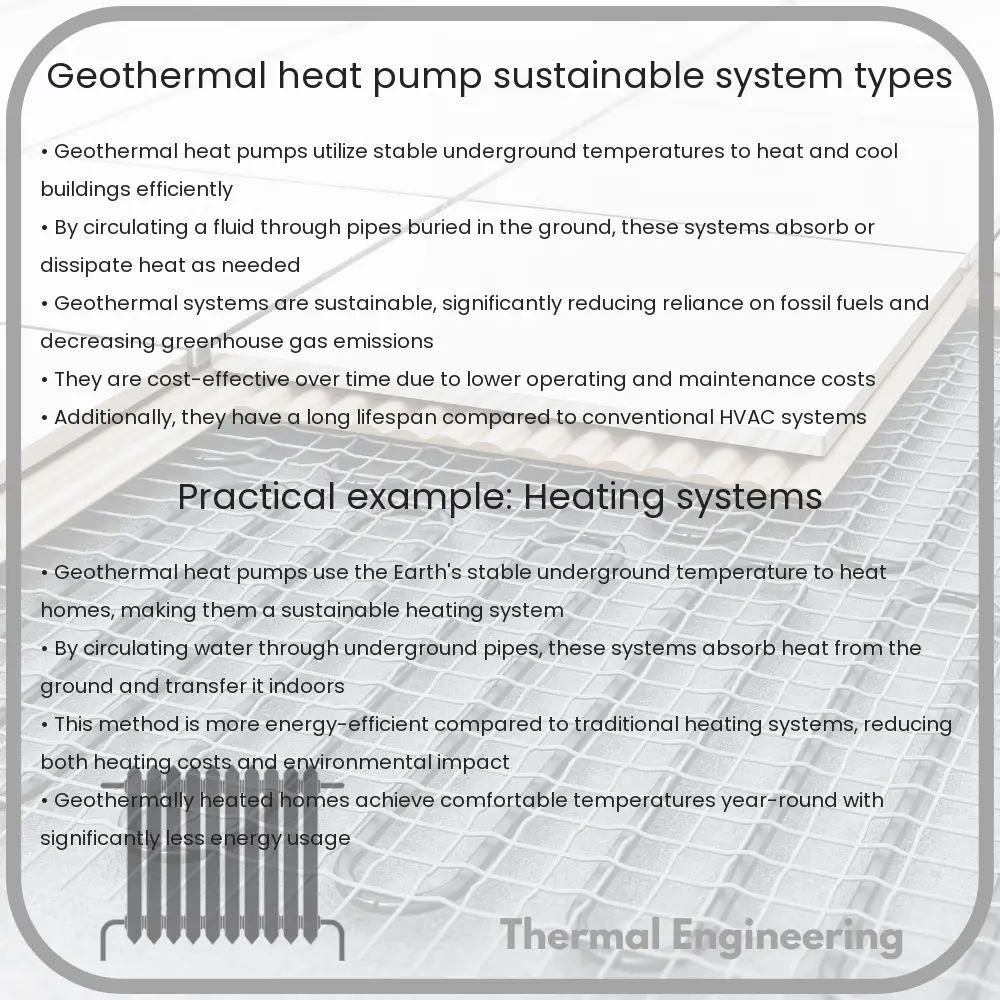Learn how geothermal heat pumps use the earth’s stable temperatures for efficient heating and cooling in buildings.

Understanding Geothermal Heat Pumps
Geothermal heat pumps (GHPs), sometimes referred to as ground-source heat pumps, are advanced and efficient heating and cooling systems that utilize the earth’s sub-surface stable temperature to provide thermal comfort in buildings. By exploiting the constant temperatures beneath the Earth’s surface, these systems offer a sustainable alternative to conventional HVAC systems.
How Geothermal Heat Pumps Work
GHP systems consist of three main components: a heat pump unit, a heat exchange fluid (water or an antifreeze solution), and a heat exchange system buried in the ground near the building. In winter, the heat pump removes heat from the heat exchange fluid in the underground pipes and transfers it to the air in the interior space. In summer, the process is reversed, and the heat pump moves heat from the indoor air into the ground. This action cools the building while using minimal electrical energy compared to traditional systems.
Types of Geothermal Heat Pump Systems
- Horizontal Systems: These are often used in residential applications where adequate land is available. Pipes are laid out horizontally in trenches dug about four to six feet below the surface.
- Vertical Systems: In places where land surface is limited, vertical systems are used. Holes are drilled about 100 to 400 feet deep, and the heat exchange pipes are inserted vertically.
- Pond/Lake Systems: If a water body is available, a pond or lake system can be an effective option. Coils of pipe are laid out underwater to take advantage of the thermal properties of the water.
- Open Loop Systems: These systems use groundwater from a well as a direct energy source. After passing through the heat pump, the water is returned to the ground through a recharge well or drainage ditch.
Advantages of Geothermal Heat Pumps
Geothermal heat pumps offer numerous advantages over traditional heating and cooling systems:
- Efficiency: GHPs can be up to four times more efficient than traditional HVAC systems due to their use of stable underground temperatures.
- Cost-effective: Although the initial installation cost of GHPs can be higher, reduced operational costs result in long-term savings.
- Environmentally friendly: GHPs reduce greenhouse gas emissions and minimize ecological disruption.
- Durability: With fewer mechanical components exposed to the elements, GHPs typically have long lifespans and low maintenance needs.
- Quiet operation: Unlike air-source heat pumps, GHPs do not require noisy fans that can be disruptive.
Challenges and Considerations
Despite their advantages, there are some considerations to bear in mind when opting for a geothermal heat pump:
- Initial Cost: The installation of GHPs involves significant upfront costs, primarily due to the excavation required for the ground loop.
- Site Suitability: The efficiency and feasibility of installation can vary dramatically depending on geological, hydrological, and spatial characteristics of the site.
- Installation Disruption: Installing a GHP system can be disruptive to the existing landscape and requires careful planning and management.
In conclusion, geothermal heat pumps represent a powerful and sustainable solution for heating and cooling needs. With the ability to drastically reduce energy use and carbon footprints, they provide an excellent long-term investment for environmentally conscious consumers and businesses. However, thorough site evaluation and professional installation are critical to capitalize on the benefits GHPs offer.